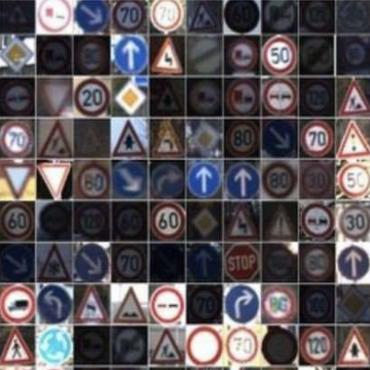Search Results for author: Takami Sato
Found 14 papers, 2 papers with code
Exploring Backdoor Attacks against Large Language Model-based Decision Making
no code implementations • 27 May 2024 • Ruochen Jiao, Shaoyuan Xie, Justin Yue, Takami Sato, Lixu Wang, YiXuan Wang, Qi Alfred Chen, Qi Zhu
Specifically, we propose three attack mechanisms and corresponding backdoor optimization methods to attack different components in the LLM-based decision-making pipeline: word injection, scenario manipulation, and knowledge injection.
Invisible Reflections: Leveraging Infrared Laser Reflections to Target Traffic Sign Perception
no code implementations • 7 Jan 2024 • Takami Sato, Sri Hrushikesh Varma Bhupathiraju, Michael Clifford, Takeshi Sugawara, Qi Alfred Chen, Sara Rampazzi
We evaluate the effectiveness of the ILR attack with real-world experiments against two major traffic sign recognition architectures on four IR-sensitive cameras.
Intriguing Properties of Diffusion Models: An Empirical Study of the Natural Attack Capability in Text-to-Image Generative Models
no code implementations • 30 Aug 2023 • Takami Sato, Justin Yue, Nanze Chen, Ningfei Wang, Qi Alfred Chen
The NDD attack shows a significantly high capability to generate low-cost, model-agnostic, and transferable adversarial attacks by exploiting the natural attack capability in diffusion models.
Does Physical Adversarial Example Really Matter to Autonomous Driving? Towards System-Level Effect of Adversarial Object Evasion Attack
no code implementations • ICCV 2023 • Ningfei Wang, Yunpeng Luo, Takami Sato, Kaidi Xu, Qi Alfred Chen
In this work, we conduct the first measurement study on whether and how effectively the existing designs can lead to system-level effects, especially for the STOP sign-evasion attacks due to their popularity and severity.
LiDAR Spoofing Meets the New-Gen: Capability Improvements, Broken Assumptions, and New Attack Strategies
no code implementations • 19 Mar 2023 • Takami Sato, Yuki Hayakawa, Ryo Suzuki, Yohsuke Shiiki, Kentaro Yoshioka, Qi Alfred Chen
To fill these critical research gaps, we conduct the first large-scale measurement study on LiDAR spoofing attack capabilities on object detectors with 9 popular LiDARs, covering both first- and new-generation LiDARs, and 3 major types of object detectors trained on 5 different datasets.
Learning Representation for Anomaly Detection of Vehicle Trajectories
no code implementations • 9 Mar 2023 • Ruochen Jiao, Juyang Bai, Xiangguo Liu, Takami Sato, Xiaowei Yuan, Qi Alfred Chen, Qi Zhu
We conduct extensive experiments to demonstrate that our supervised method based on contrastive learning and unsupervised method based on reconstruction with semantic latent space can significantly improve the performance of anomalous trajectory detection in their corresponding settings over various baseline methods.
Semi-supervised Semantics-guided Adversarial Training for Robust Trajectory Prediction
1 code implementation • ICCV 2023 • Ruochen Jiao, Xiangguo Liu, Takami Sato, Qi Alfred Chen, Qi Zhu
In this paper, we present a novel adversarial training method for trajectory prediction.
Semi-supervised Semantics-guided Adversarial Training for Trajectory Prediction
no code implementations • 27 May 2022 • Ruochen Jiao, Xiangguo Liu, Takami Sato, Qi Alfred Chen, Qi Zhu
In addition, experiments show that our method can significantly improve the system's robust generalization to unseen patterns of attacks.
Towards Driving-Oriented Metric for Lane Detection Models
1 code implementation • CVPR 2022 • Takami Sato, Qi Alfred Chen
After the 2017 TuSimple Lane Detection Challenge, its dataset and evaluation based on accuracy and F1 score have become the de facto standard to measure the performance of lane detection methods.
SoK: On the Semantic AI Security in Autonomous Driving
no code implementations • 10 Mar 2022 • Junjie Shen, Ningfei Wang, Ziwen Wan, Yunpeng Luo, Takami Sato, Zhisheng Hu, Xinyang Zhang, Shengjian Guo, Zhenyu Zhong, Kang Li, Ziming Zhao, Chunming Qiao, Qi Alfred Chen
In this paper, we perform the first systematization of knowledge of such growing semantic AD AI security research space.
On Robustness of Lane Detection Models to Physical-World Adversarial Attacks in Autonomous Driving
no code implementations • 6 Jul 2021 • Takami Sato, Qi Alfred Chen
We demonstrate that the conventional evaluation fails to reflect the robustness in end-to-end autonomous driving scenarios.
End-to-end Uncertainty-based Mitigation of Adversarial Attacks to Automated Lane Centering
no code implementations • 27 Feb 2021 • Ruochen Jiao, Hengyi Liang, Takami Sato, Junjie Shen, Qi Alfred Chen, Qi Zhu
The experiment results demonstrate that our approach can effectively mitigate the impact of adversarial attacks and can achieve 55% to 90% improvement over the original OpenPilot.
Dirty Road Can Attack: Security of Deep Learning based Automated Lane Centering under Physical-World Attack
no code implementations • 14 Sep 2020 • Takami Sato, Junjie Shen, Ningfei Wang, Yunhan Jack Jia, Xue Lin, Qi Alfred Chen
Automated Lane Centering (ALC) systems are convenient and widely deployed today, but also highly security and safety critical.
Security of Deep Learning based Lane Keeping System under Physical-World Adversarial Attack
no code implementations • 3 Mar 2020 • Takami Sato, Junjie Shen, Ningfei Wang, Yunhan Jack Jia, Xue Lin, Qi Alfred Chen
Lane-Keeping Assistance System (LKAS) is convenient and widely available today, but also extremely security and safety critical.






